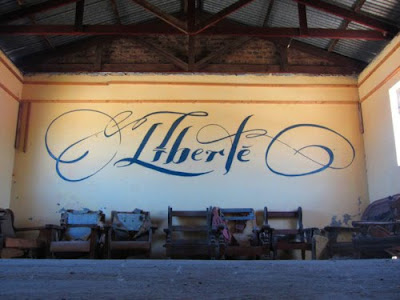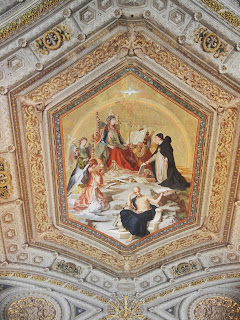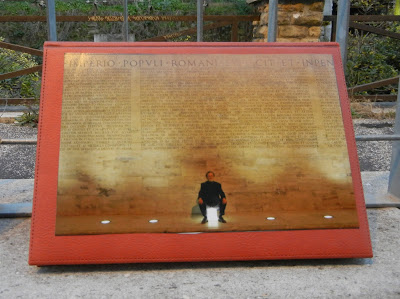the Wright way: FIND your old bulb of garlic in the back of the fridge after a few weeks. Realize that it's growing sprouts and roots. Use Tim's computer. Find an old yogurt container, punch holes in the bottom for drainage, plant an inch below the soil from the Eden that is the central courtyard, put it on a sunny windowsill, and add 50% moisture.
______________________________________
Yesterday we presented our final projects for the "Derive" assignment. Needless to say, each group had a completely different experience in documenting their journey. The point of the project was arbitrary, but each group HAD to start in a specific location in Rome [a location with which they were unfamiliar; I started at Cavour metro stop] and find their way home using only their innate sense of direction. We weren't allowed to hinder ourselves with a map; the final presentation was to "map" the journey. Whatever you took that to mean was your prerogative.
Many of the projects had multiple layers of meaning, each layer expressing different emotions, moments in time, personal reflection, and mutual understanding. Some people used found objects from their journey, and others laced theirs together with supplies found in studio.
I think I can speak for everyone when I say this project was more of a learning experience. I have to be more confident in my ideas. You can do whatever you want. As long as it's really good.
I think we were all afraid of requirements, which is why my project included a drawn portion, whose conversation with my primary project [a model] wasn't absolutely coherent.
While the other groups focused on a more literal journey [in that pictures of landmarks and paths they remember were literally portrayed], Steve and I were more concerned with the idea of memory and how journeys like this are remembered.
A distant memory is less of a documentation [I know few people who walk around with their face in a leather-bound feelings journal, documenting every step of every day of their life], and more of a jumbled mass of emotion with outstanding points of remembrance. It is also customizable by a constantly changing perception of value, and a "plethora" of other things. You remember what is important to you. That hierarchy can change. It just depends. It all depends.
My model has moving parts.
There are three disassembled lamps strewn under my studio desk... I needed the bolts [I love breaking the rules].
There are four planes: transparent/black/white/grey planes. They're connected and they turn and change. They also look rad when held up to a light.
There is a lot to this project conceptually, but I know pictures are more fun:


























 has something to do with music, since Saint Cecilia is the patron saint.
has something to do with music, since Saint Cecilia is the patron saint.













